In 1096-1099 the I Crusade is developed, in which Hugo de Payns participates among others.
In the year 1118, the French knight, named Hugo de Payens and the Flemish knight Godofredo de Saint-Adhemar, decided to promote the founding of a monastic order, the purpose of which was to guard the Pilgrims and guard the dangerous roads that led to the places of Pilgrimage. They named it Order of the Poor Soldiers of Christ.
Índice de contenidos
ORIGIN OF THE ORDER OF KNIGHTS TEMPLAR
The Order of Knights Templar it was founded by 9 french knights at the beginning of the twelfth century. This military and Christian order of the Middle Ages had the mission of patrol all the way that led to Jerusalem. In this way, they protected the pilgrims who went there after their conquest.
The power that that order had increased rapidly for various reasons. However, the main factor has to do with They handled Arabic numerals well. While in other parts of Europe the Roman ones were still used.
This knowledge allowed them to learn geometry, trigonometry and arithmetic for the development of a system. As you know, this is considered the representation of the origin of the banking system that is currently used. The influence that this order had is still perceived in the Templar churches of the French Way that we will see later.
WHAT A TEMPLARY WAS
The humility and poverty of the Templars is evident in the Seal and Symbol used by the Templars: two Knights Templar mounted on a horseback. The seal reflects the collection and transfer of pilgrims who went to Jerusalem.
The Knights Templar, renounced all kinds of personal property, the Order being the Owner of all the Goods.
The Templars, were forbidden to share the horse and the Rules of the Order, stipulated that each Knight Templar should have 3 horses.
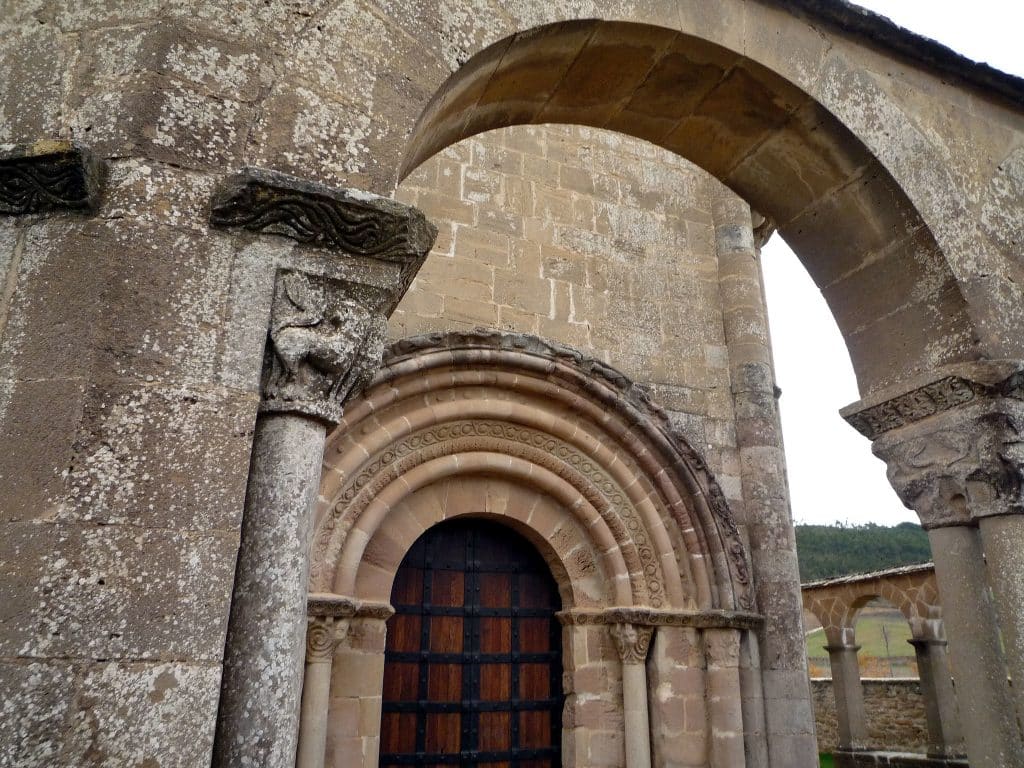
TEMPLAR SYMBOLS ON THE WAY OF SANTIAGO
The Camino de Santiago was traveled by thousands of pilgrims every year. For this reason, the cleric and the kings decided to offer shelters, hospitals, bridges and protection to make the pilgrimage easier. From there arose the famous order of Knights Templar, as well as the Templar churches of the French Way.
His presence was stronger and stronger on this very popular path. They reached the point of leave a mark on various constructions that still exist today. For example, the Templar churches of the French Way.
At Camino de Santiago organized On the French side, the main Templar chapels and churches to be visited by pilgrims in the different locations are:
EUNATE
The Hermitage of Santa María de Eunate Probably the most puzzling Templar hermitage, since its origin generates many controversies.
It is in the place where the Paths come together from Somport and the Camino de Santiago from Roncesvalles. It’s in the Free field, exactly 2 km from Muruzábal (Navarra). In reality, it does not have any document that reliably accredits it as a Templar church. However, its physiognomy reveals certain characteristics that could indicate that some Knights Templar participated in its construction.
The complex has an octagonal plan (typical of Templar buildings). It is surrounded by a porticoed gallery with 33 arches, with decorated capitals. The harmony of the octagonal plan is broken by a pentagonal apse and a square turret attached to the Epistle side. Furthermore, it is believed to have a shape similar to the Dome of Rock, which is in the ancient temple of Solomon. This place was the first headquarters of the Templars in Jerusalem.
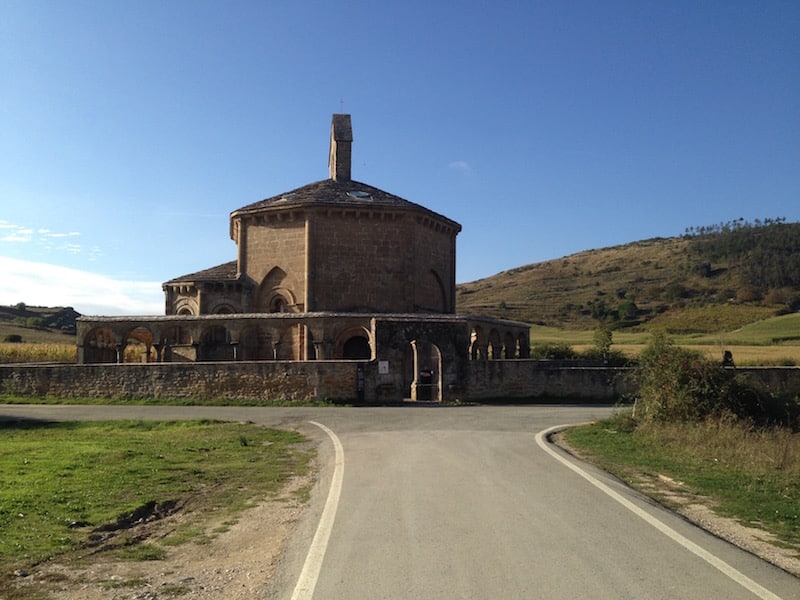
RIVER TOWERS
La Church of the Holy Sepulcher, is the culmination of the perfect octagon of the Templars on the Camino de Santiago. The Church of Santo Sepulcro de Torres del Río or Sansol, also named for the nearby hill of that name, follows in its plan the rare octagonal pattern already seen in that of Eunate. It served as a guide-lighthouse to guide pilgrims in transit to Santiago de Compostela, as well as that of Eunate.
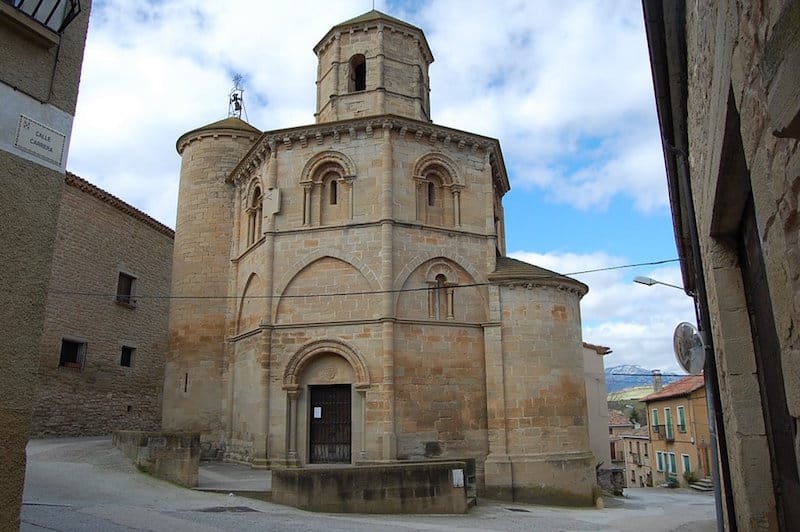
THE QUEEN BRIDGE
Church of the Crucifix: Of late Romanesque style, it was built by the Templars on the Camino de Santiago in the middle of the XNUMXth century, and welcomes the Virgin with Child from the XNUMXth century and a Crucified Christ, in the shape of a “Y”
CASTROJERIZ
Church of San Juan: On the Camino de Santiago, rebuilt on a Romanesque base.
Was columnar temple belonging to the Knights Templar, that later they gave to the Hospitallers, so that they carried out their work of aid to the Pilgrims. That was before it became a Catholic congregation due to the expulsion of the temple order.
In the columns, precisely in their capitals, it is possible to observe kicked crosspieces with a Templar origin.
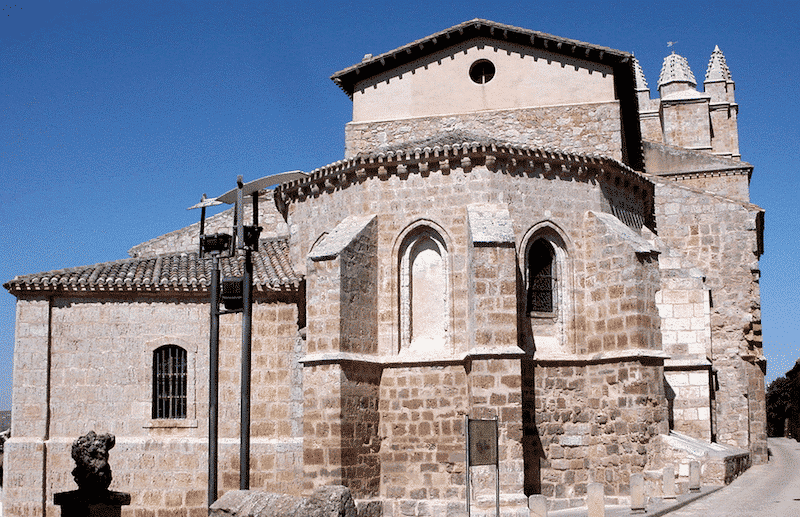
VILLALCAZAR DE SIRGA
The commendation founded by the Templars in Villalcázar de Sirga (Palencia), during the XNUMXth century, is now the Church of Santa Maria de la Blanca. That parcel served as a building, formed by the Templars with donations and the subsequent purchase of other land or nearby buildings.
The Church of Santa María la Blanca It was a sanctuary for the devotion of Mary, Mother of Jesus Christ, which had a period of great splendor between the XNUMXth and XNUMXth centuries, due to the protection of the Crown of Castile, among which were the kings Alfonso X the Wise and his son Sancho IV.
ROAD RABANAL
Parish church. Small Church, with Romanesque remains that belonged to the Templar Commendation on the Camino de Santiago (Ponferrada)
PONFERRED
Since 1178, Ponferrada depended on the order of Knights Templar thanks to the donation made by the Kings of Leon. Arriving at the place, the templars found a small fortress which originally served as a Roman fortress.
From that moment, several extensions began to be carried out that ended in the year 1282. The purpose of these extensions was for the complex to become a place of defense on the Camino de Santiago.
Therefore, the Castle of Ponferrada that can be seen now is the sum of many reforms. Which were made with the passing of century after century.
For all these reasons, it represents one of the most important Temple parcels in Spain. Ponferrada Castle It was a fundamental enclave of the Templars on the Camino de Santiago, more specifically in the Kingdom of León.
They carried out protective work on the Camino de Santiago, later handing over these functions to the Order of Santiago and the Hospitallers. The encomienda had the Castles of: Cornatel, Corullón, Sarracín (Vega de Valcarce) and perhaps also the Castle of Balboa. The disappearance of the Order, led to the change of owner, passing through the hands of the Osorio family and the Count of Lemos. As a result of the Irmandiña revolt and the struggles between the Count of Lemos and his son, it was claimed by the Catholic Monarchs.
The jurisdiction of the encomienda of the Order of the Temple of Ponferrada, covered almost the entire Bierzo, extending from Rabanal de Road from O Cebreiro. The Bierzo monasteries belonged to the Cistercian and the O Cebreiro al Cluny Monastery.
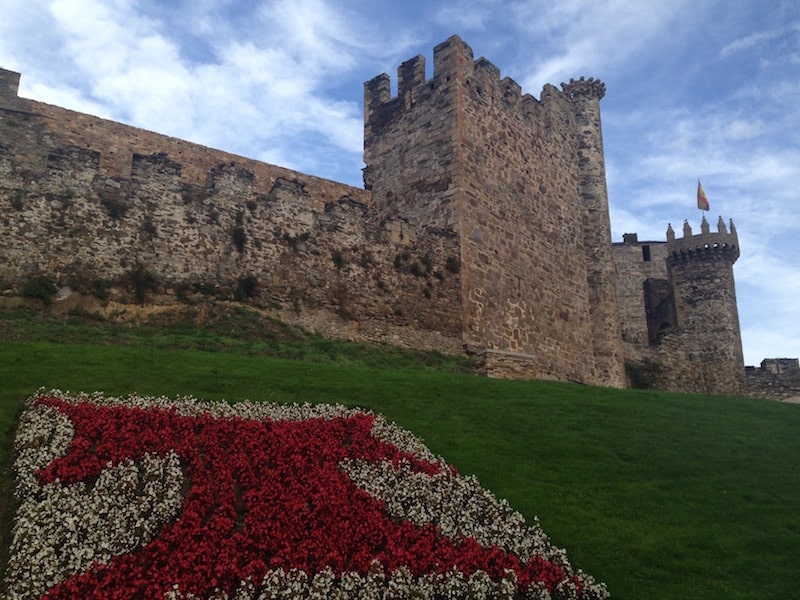
ANECDOTE: In this photograph with the Templar “T” it is said that when Mark Zuckerberg walked the Camino de Santiago before founding Facebook, he was inspired by the logo of said social network.
VEGA DE VALCARCE
El Sarracín Castle, was one of the main enclaves of the Templars on the Camino de Santiago, for the defense of the Pilgrims who were going to Santiago.
This is because its position was ideal to defend the large number of pilgrims heading to Santiago.
The area where it is located (Vega de Valcarce (León) used to be a conflict area, because the right to pass was charged. Although pilgrims were exempted from this payment, some sought to avoid that point by using alternative routes.
In this way, a path was formed parallel to the original path, and it passed next to the Castle of Sarracín. The objective was that the Templars could defend the pilgrims from the portazgueros that they want to charge.
En Vega de Valcarce, the Portazgo was charged, which was a payment for a right of way. The pilgrims were exempt, but many times the commissioned pilgrims could be considered rich merchants and were forced to Portazgo payment. This originated a historical path that runs alongside Sarracin by Mount de la Villela (Villaus del Codex Calixtinus), thus obtaining protection from the Portazgueros of the Castle of Autares.
There was another alternative path, to avoid the Portazgo, which deviated through the San Fiz valley, and continued towards Villasinde (Villasinde Hospital) and connected in La Vilela with the Historic path. You also continue towards Barjas (see Juego de la Oca), accessing O Cebreiro. Past O Cebreiro, and especially in the Camino de Santiago from Sarria to Santiago, the protection of the pilgrims passed to the Order of Santiago.









